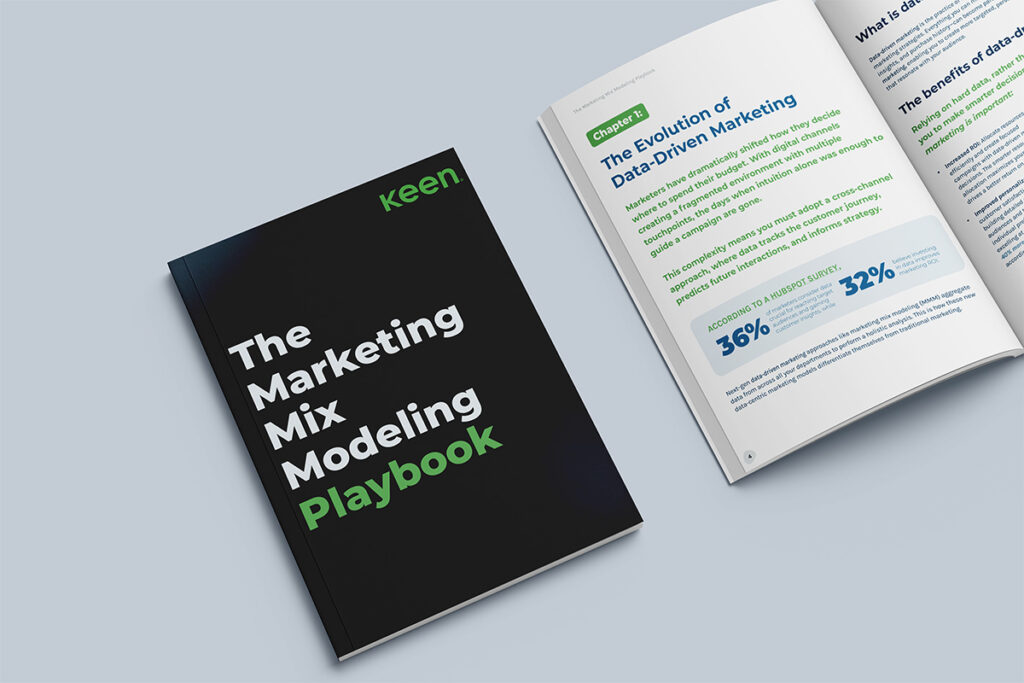For many brands, especially those in categories dominated by pricing and distribution, the value of brand building can be a difficult internal conversation. Teams often face skepticism and the belief that success is driven solely by trade and promotion, not marketing. This challenge forces marketers to prove that every dollar spent is a strategic investment. So, how can a brand with a lean budget move from a “black box” approach to one of clear, data-driven decision-making?
Key Takeaways
- To gain buy-in for marketing analytics, focus on how it optimizes a limited budget, ensuring every dollar is spent effectively.
- Successfully implementing a new measurement system requires moving people away from the fear that it is a “report card” on their personal performance and toward a culture of collective learning and optimization.
- The primary value of modern marketing mix modeling is not just in measuring past performance but in using a predictive planner to make smarter, forward-looking budget allocation decisions.
- Overcoming resistance requires a champion in senior leadership who can advocate for the technology and drive adoption across the organization.
- To ensure continued investment, it is crucial to collect data that demonstrates how the tool pays for itself through improved efficiency and growth.
How Do You Justify Marketing in a Commodity Category?
For Sean Thompson, a 25-year market research veteran at Cabot Creamery, this was a familiar challenge. Cabot, a dairy co-op owned by over 500 family farms, is primarily known for its cheese, a product in a highly competitive and price-sensitive grocery aisle. The prevailing mindset often defaults to distribution and trade as the primary growth levers.
The journey at Cabot began with small steps. The organization had prior experience with price and promotion modeling but viewed marketing mix modeling (MMM) as a new frontier. According to Sean, the first step was education. “There was a lot of education going into it, helping people to understand the value,” he explains. The key to selling the concept internally was focusing on budget optimization. “When you have a slimmed down marketing budget, it’s absolutely crucial that every dollar gets spent in its optimal place,” Sean notes.
Overcoming the Fear of the Report Card
A significant hurdle in adopting any new measurement tool is managing internal change and overcoming fear. Host Brad Keefer, Chief Revenue Officer at Keen Decision Systems, points out that functions like trade or finance are often resistant, fearing that modeling will lead to budget cuts or expose flawed assumptions.
Sean confirms this was a critical part of the process at Cabot. A primary challenge was shifting the team’s mindset away from viewing the model’s output as a personal performance review. “You have to move people away from the mentality that this is a report card on their personal performance,” he states. For example, some data providers were hesitant to participate because their tactics, like coupons, historically show a low direct ROI. Sean’s team had to reassure stakeholders that the goal was not to eliminate tactics with low ROI but to understand their role and invest appropriately. “It’s just to help us better understand the landscape and allocate money appropriately so that we can do all these things, but not over or under invest,” he says.
Why a Planning Tool Is More Valuable Than a Model
The conversation highlights a critical evolution in marketing mix modeling: moving from a historical scorecard to a forward-looking planning tool. Traditional MMM often results in a massive, static report, leaving marketers to interpret the “so what” on their own.
Sean emphasizes that the true value lies in the ability to plan and simulate future scenarios. He recounts a past experience where a predictive planner failed because its outputs didn’t align with reality. In contrast, the new generation of tools allows for dynamic planning. “We want the modeling to be fast,” Sean says. “We’re more interested in leveraging the planner to make sure that we’re in the right ballpark with our spends.”
This shift enables Cabot to operate on a more strategic cadence, planning on a “front half, back half” basis rather than getting bogged down in constant, reactive changes. This approach allows them to set a course, guide decisions for the upcoming six months, and then reassess.
The Future of Marketing Analytics
Looking ahead, both Brad and Sean are excited about the increasing sophistication and accessibility of marketing analytics. While AI is a major topic, Sean believes its next evolution will be creating more interactive tools for marketers. “If you could have something that was interactive…I actually think something like that could be very beneficial to managing marketing mix and getting information out of marketing mix,” he envisions. Imagine asking an AI, “What is the projected impact of raising my price by 10% at this retailer in June?” and getting an instant, data-backed answer.
Brad adds that the industry is finally catching up to the idea that predictive math can be trusted. The ultimate goal is accountability. If a model’s forecast is accurate, the measurement driving it must be sound. “If my measurement was wrong, then my forecast would be wrong,” Brad explains. This creates a closed-loop system of accountability between planning, execution, and results.
Learn More & Connect
Ultimately, Cabot’s journey demonstrates that with the right tools and internal champions, any brand can transform its marketing from a cost center into a predictable, measurable engine for growth. By shifting the focus from a simple report card to a dynamic planning tool, marketers gain the confidence to make critical budget decisions.
If you are ready to move beyond the black box and build a more accountable marketing plan, book a demo today and see how Keen’s MMM platform can help.

